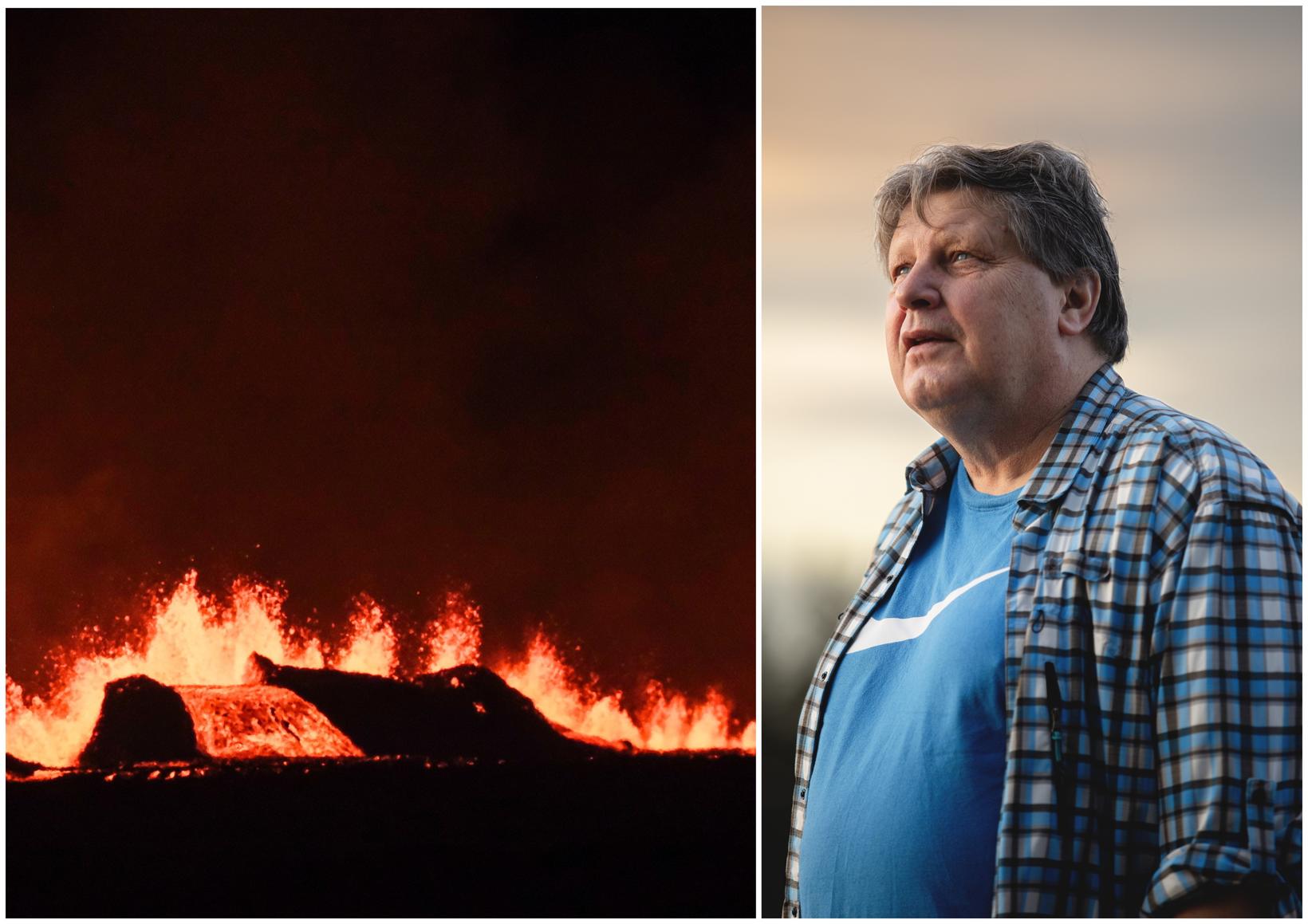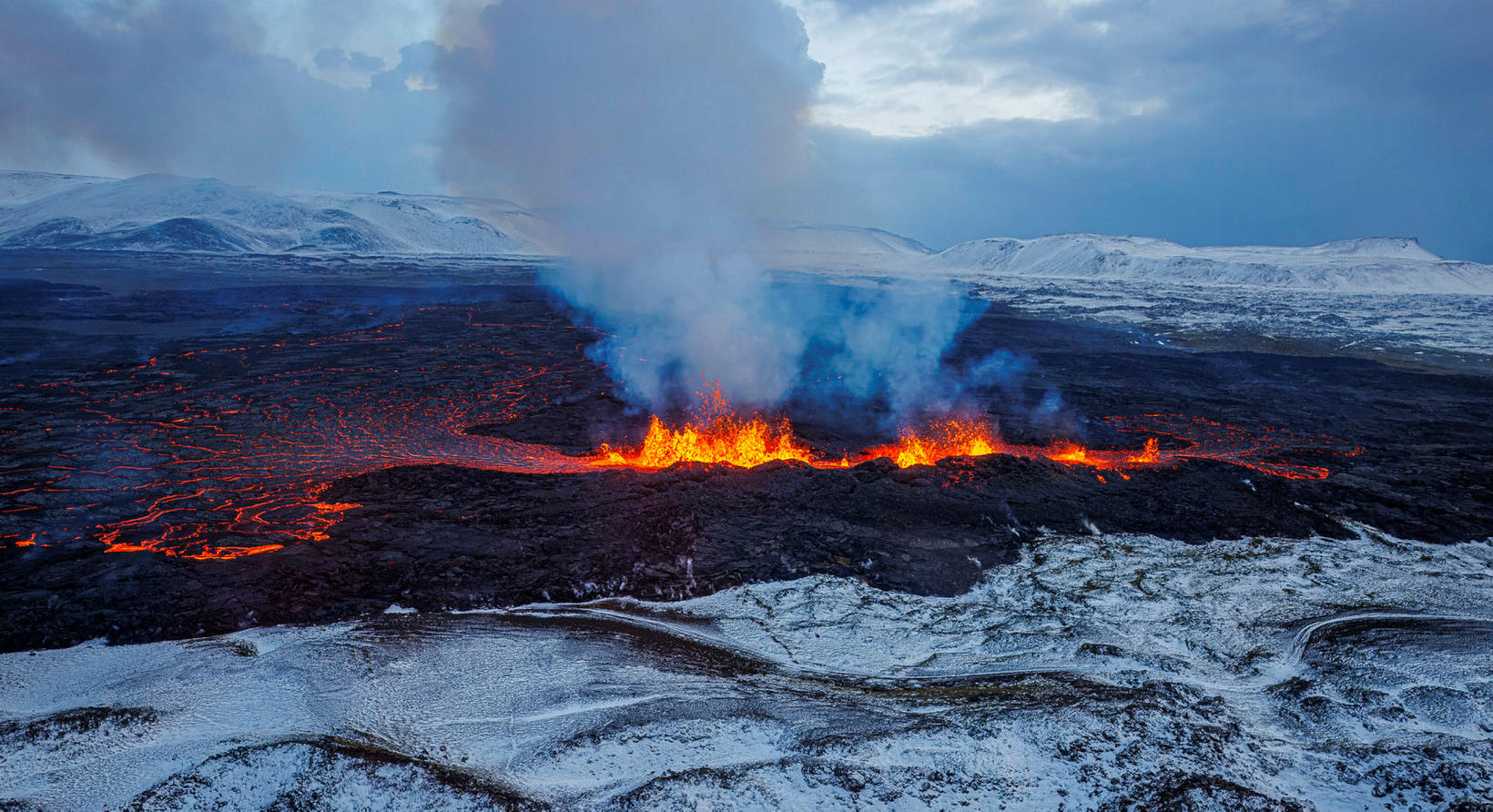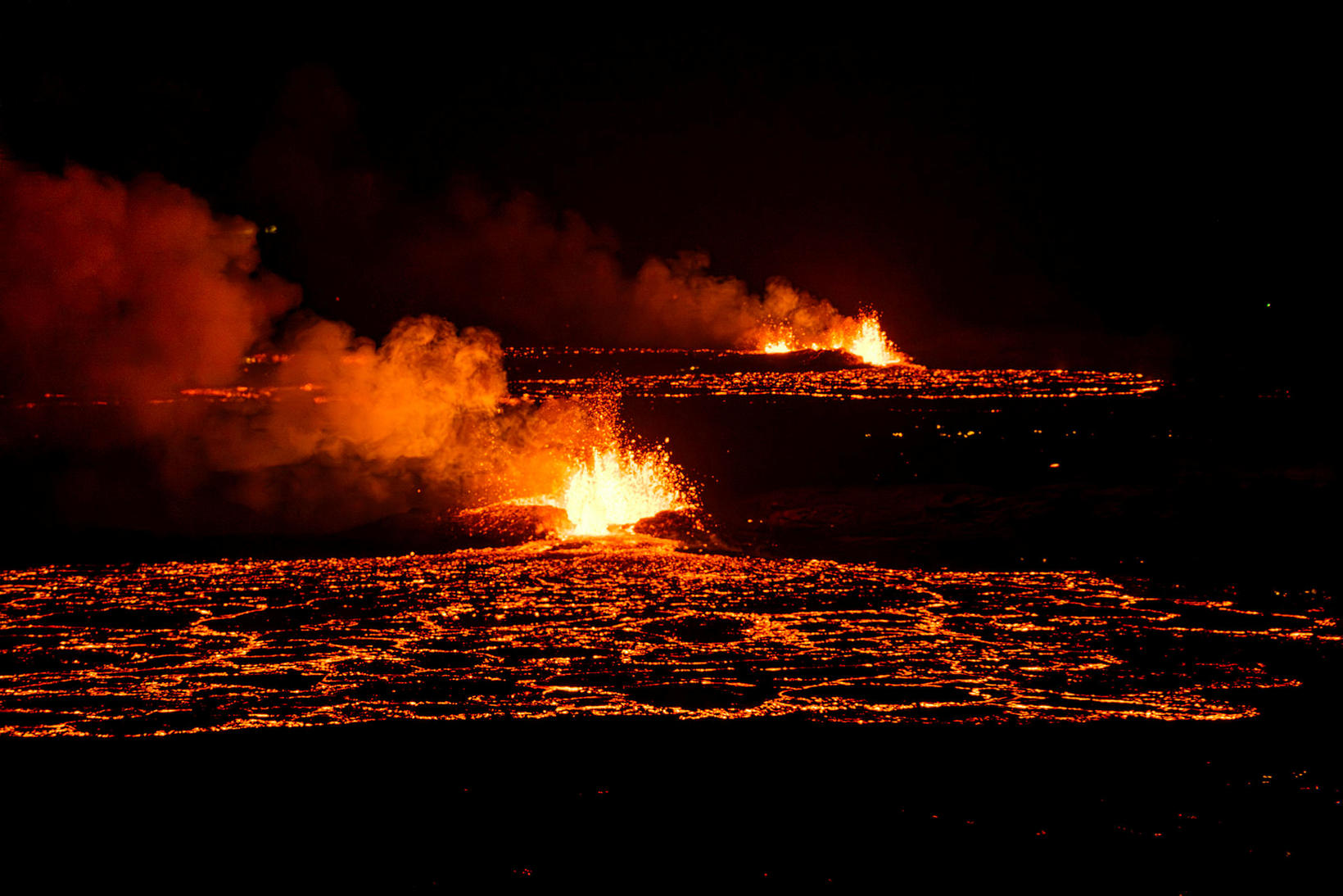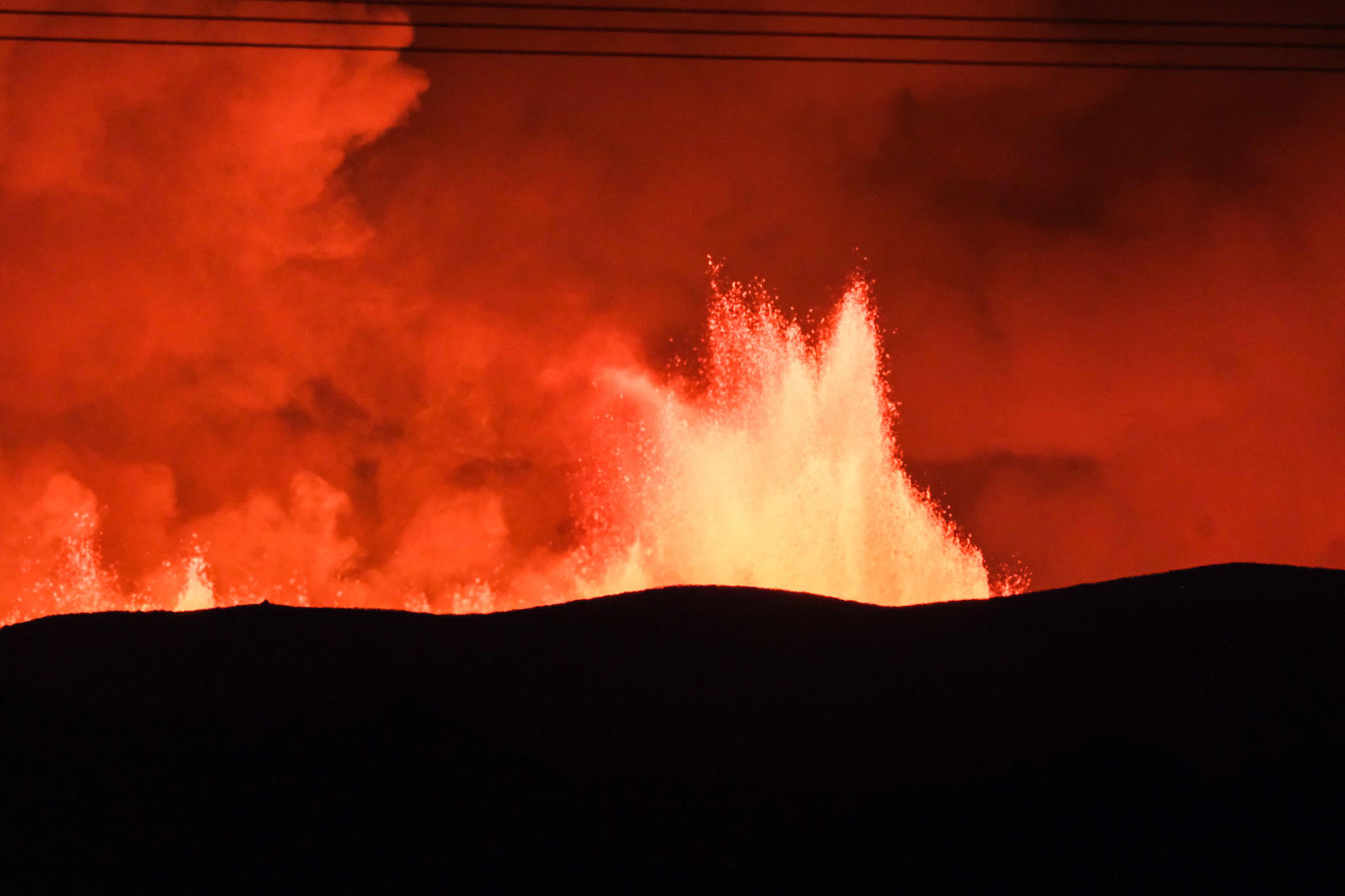Thinks it's over but the next days will be indicative of what happens next
The volcanologist Þorvaldur Þórðarson thinks that the eruption at Sundhnúkagígar crater row is over, but the next days will determine what happens next. Composite image
“I believe this eruption is over,” says Þorvaldur Þórðarson, a professor of volcanology, asked about the Met Office’s announcement yesterday that no eruptive activity is visible at the eruption site and that it appears the crater has been extinguished.
He had explained to mbl.is on Wednesday that the eruption could end in the weekend or after the weekend, and this conclusion does not surprise him.
The eruption started with a bang on Monday near the Sundhnúkagígar crater row, and was the most powerful of all the eruptions in Reykjanes peninsula since Fagradalsfjall mountain in 2021. mbl.is/Árni Sæberg
“Activity was always decreasing in terms of power and productivity. You could say that this scenario is more like what you might be used to in a eruption like this,” says Þórðarson, citing many of the Krafla eruptions as examples. They were powerful at the beginning but then came to an end in a few days.
Most similar to the eruption in Litli-Hrútur
He says that the eruption at Sundhnúkagígar crater row is most similar to the eruption at Litli-Hrútur of the volcanic eruptions that have occurred on the Reykjanes peninsula in recent years. It was very powerful at the beginning but it decreased rapidly, although it was able to stay alive for several weeks. The eruption at Sundhnúkagígar crater row was by contrast the most powerful of all of them, but at the same time the shortest.
“The reason for this is that the magma that’s coming up there comes from the same deep chamber as the magma that came out of Fagradalsfjall mountain. But instead of coming up straight, it went to a magma storehouse at a shallow depth, four to five kilometres beneath Svartsengi,” he says, mentioning that the magma has crystallized to make itself lighter. Pressure has built up and once it was sufficiently high, the magma came up very quickly, or in just over an hour.
The yield was high at the beginning, about 300 cubic meters per second, but dropped in the following hours to 10 cubic meters per second. Due to the pressure in the magma chamber, the storage was depleted very quickly, and the power of the eruption was quickly reduced.
“We saw all of this, high magma concentrations at the beginning, high productivity and a lot of lava flow,” he says.
The lava flow was already low by midday on Tuesday. “This all indicated that this was a pressure drop that would lead to the eruption stopping.”
Land rising gives an indication of the future
When asked how the events on the Reykjanes peninsula look, he says that they seem to be connected and probably come from the same deep magma store.
He wonders whether this is the last eruption in this cycle of seismic activity in the region or whether more eruptions are to be expected. That will most likely be apparent in the next few days, depending, among other things, on whether land rising at Svartsengi begins again. If magma flows back in there, this scenario may occur again.
“If nothing happens, it may be over, but we have to wait and see,” he concludes.











